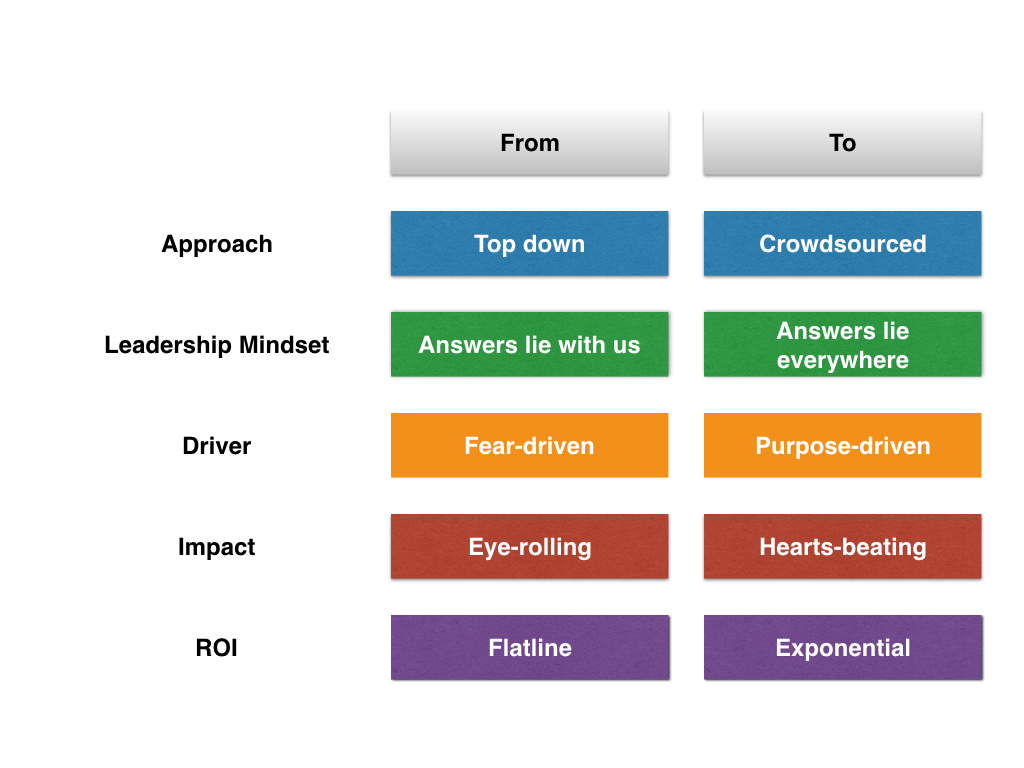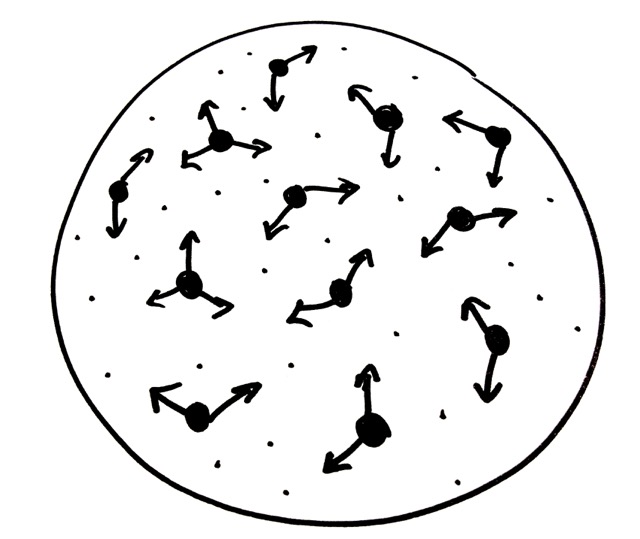I recently assisted a government department to define their sense of common purpose, and to highlight the great aspects of their culture that they wanted to reinforce. It was a powerful experience that created ripple effects across the entire organisation. And I reckon that’s because of the way the senior leadership team chose to approach it.
Traditionally, a senior team first works behind closed doors to come up with a first draft. Brimming with excitement, they then embark on a top-down rollout to get input and buy-in from the rest of the organisation. (Note: If you had your corporate-jargon alert-o-meter on for that last sentence, it’d be maxing out right now). Typically, these efforts result in eye-rolling passivity from the majority of the staff, who just want to get on with the job without being distracted by another poster on the wall. With this approach, you’re hard-pressed to generate the collective energy you’re hoping for.
It doesn’t work. We need a shift. Here’s what that looks like:
In the case of this organisation, the senior team chose to do two things:
- Invited all staff into collective conversations about purpose and culture
- Invited others across the organisation to lead those conversations.
The leadership team recognised that in any group of people, whether it be a single team or a whole organisation, there are a few people who people represent the best of what the entire group aspires to be. They have the sort of energy and drive to really want to make a difference, and when you meet them, you can’t help but be inspired. These people are your ‘cultural carriers’.
If we use the analogy of a petri dish, they’re the bacteria that the culture grows around.

While some of them might be at the top table, most of them won’t be. They’re spread across the organisation from top to bottom, and they have a disproportionate impact on the culture.
The senior team identified some possible cultural carriers, and shoulder tapped them. They also invited any interested others from across the organisation to join in. We equipped this relatively small, yet highly engaged group with the mentoring, the training, and the tools to host the conversations, and then they were handed the reigns. All members of the leadership team were active participants in the conversations, but they were not the leaders.
What I think is particularly unusual, and ultimately powerful, about this scenario is the maturity of the senior team to know that the culture lives in the organisation, not at the top table. They had the sense to tap into the wisdom of the crowd while playing the roles of hosts and curators. They got out of the way and let the people do the work, accelerated by a few key cultural carriers.
Who are your cultural carriers? How can you tap into them to shift your culture?
Like this post? You’re only getting half the story. Sign up to my ‘Fresh Thinking’ newsletter, delivered monthly to your inbox.
Cultural Carriers are your potential Change Makers. Learn more about my Change Makers programme, including next intake dates.



4 thoughts on “Who Are Your Cultural Carriers?”
Comments are closed.